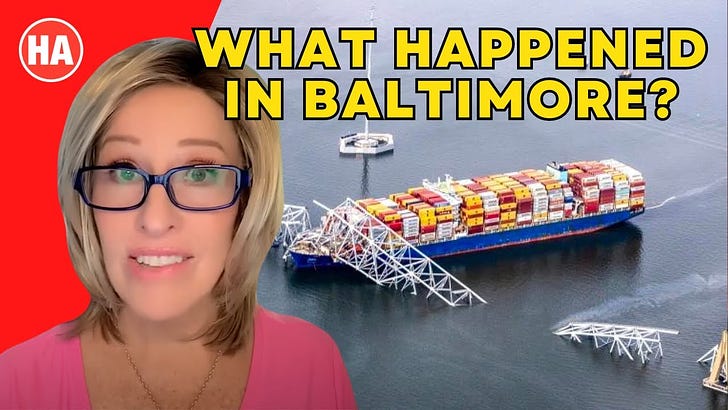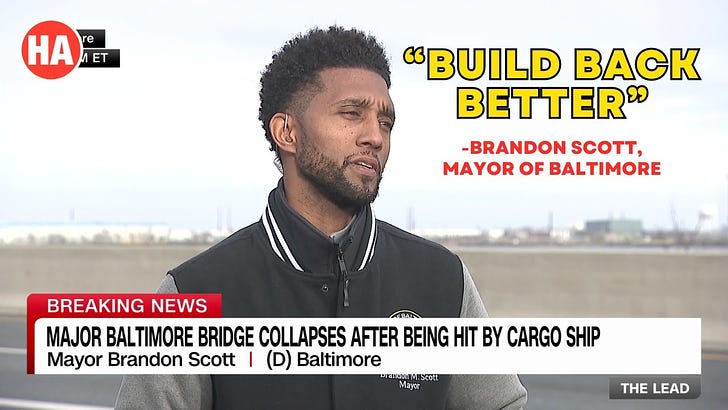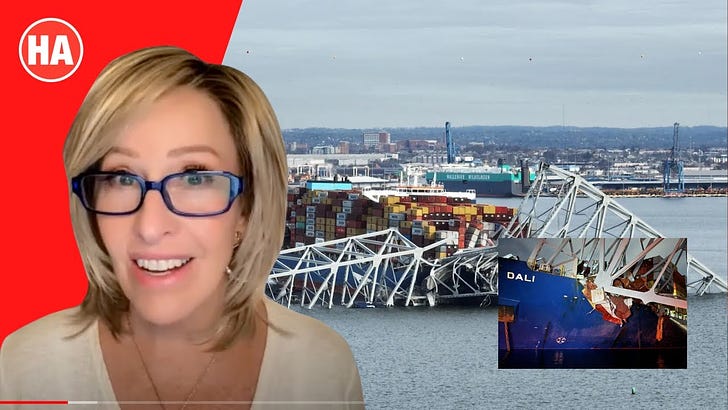Harbor Pilot Explains What SHOULD Have Happened on the Dali
As you know, numerous details were absent regarding this incident with the Francis Scott Key bridge in Baltimore, such as the identities of crucial individuals like the captain, harbor pilots, and crew. There were also concerns about the Dali's preparedness for sea, particularly given its history of issues. Recently, I stumbled upon an intriguing article by a seasoned ship's officer detailing how captains and harbor pilots collaborate to prevent harbor collisions. Amid discussions about the recent maritime incident involving the Dali, the officer, Alan Post, shared his perspective, suggesting that an "electrical fault on the ship" could have caused the tragedy.
Post, a deputy superintendent from Texas A&M Maritime Academy, offered a glimpse into the routine procedures followed when ships enter or depart ports. He emphasized the crucial role of harbor pilots, who are essentially advisors to the captain, or as they're formally known, the master of the vessel.
There were two ship pilots aboard the ship as it left its berth in the Port of Baltimore. Can you tell us what ship pilots do?
Ship pilots are brought on board in what are considered restricted maneuverability or navigation areas. They are local experts who are usually certified by the state or federal government to provide advice to the master of the vessel as to how to control the vessel, safely and adequately, through the pilotage waters, which in this case would be down the river from the Port of Baltimore.
Pilots are well practiced in close-quarters maneuvering, especially with tugboats and docking the vessel alongside the assigned berth.
They are just advisers to the captain, who is known as the “master.” The master still has full responsibility for the safe navigation of the vessel.
What amazed me was learning about how much training harbor pilots go through. Many spend over a decade honing their skills before piloting ships independently. Harbor pilots usually start at maritime academies, spending years at sea gaining experience. They then enter pilot apprentice programs, lasting several years, where they receive hands-on training and simulation exercises. Post says that most harbor pilots have a minimum of 10 years training before they can work on their own.
The pilot also has the authority to halt operations if they deem conditions unsafe or if they believe the vessel is not ready to transit safely.
Thinking about it, with the Dali's history of problems and the harbor pilot giving the green light for sailing, it makes you wonder who's responsible. It's interesting how the ship ran into engine and electrical issues so soon after leaving port…
Watch my video above and let me know your thoughts in a comment below.
Read Next:









I grew up near NYC where the harbor is intersected by 2 large rivers & contains multiple small islands, with ferries, tourist ferries, cargo, and passenger ships, and a lot of small, private, pleasure craft as well, navigating its waters, even in the early '50s, so I knew about harbor pilots. There was also the Merchant Marine Academy out on LI, not far north of my home. Anyone watching a video of Sully's landing in the Hudson saw just how many boats, and ferries showed up in real short order, to assist, since they were in the area. That was just 1 corner of the harbor, so harbor pilots are necessary & well trained. However, I believe they rely on the ship's crew about the sea worthiness of their ship, since they are only aboard to pilot her into, or out of, the harbor, and if they lie or are unaware of problems, things can go wrong. By the same token, with so much reliance on computers, hacking is not out of the question, out of the control of either harbor pilot or Captain. And then there is the possibility of a saboteur. Or just plain old "sh9t happens", including possible failure simultaneously of both primary and back up systems, and nobody acted intentionally. The fact there are not more frequent collisions, IMO, attests to the skill and training of the harbor pilots. Large ships, or airplanes for that matter, take several seconds to begin responding to sudden changes in command input in a crisis, unlike, say small sports cars, and humans require a few of those to recognize and process a problem as well. Since the computers went down with the power and hydraulics, no help from that quarter.
Personally, I think all this " knee-jerk" speculation and fear mongering is both foolish and unhelpful. Lets let the investigators see what DID happen and why, before we jump off the cliff.
This video was post edited. Craig does this all the time. Not realistic at all. In fact, when you said that you thought there was something '"fishy" here, I was in the process of opening a giant 32 jar of Pickled Herring for a snack while I watched your video!!